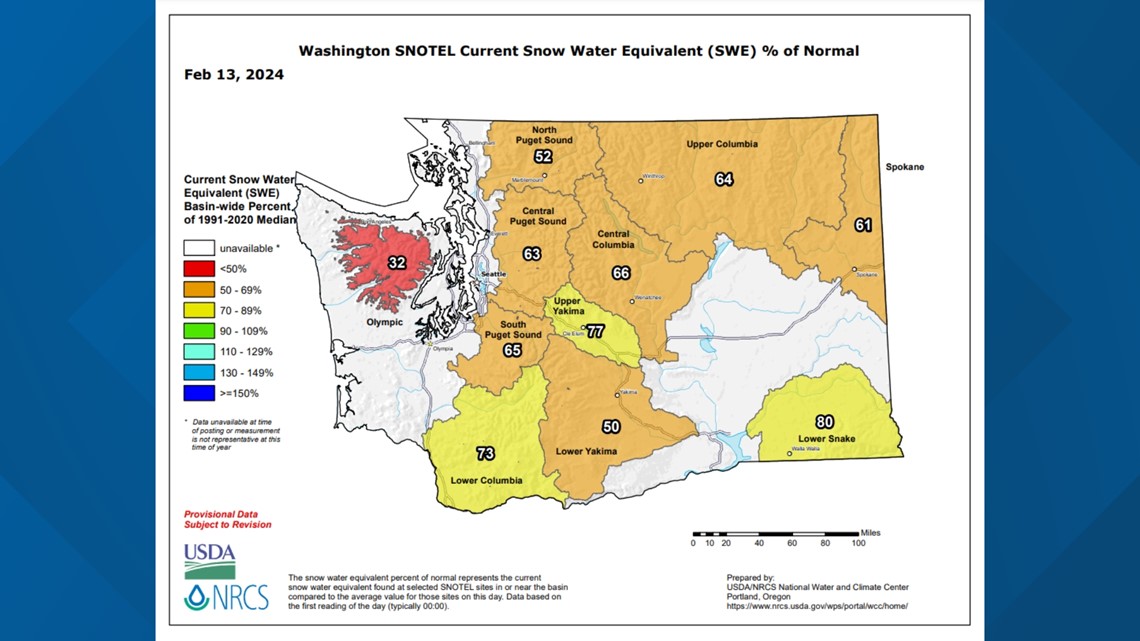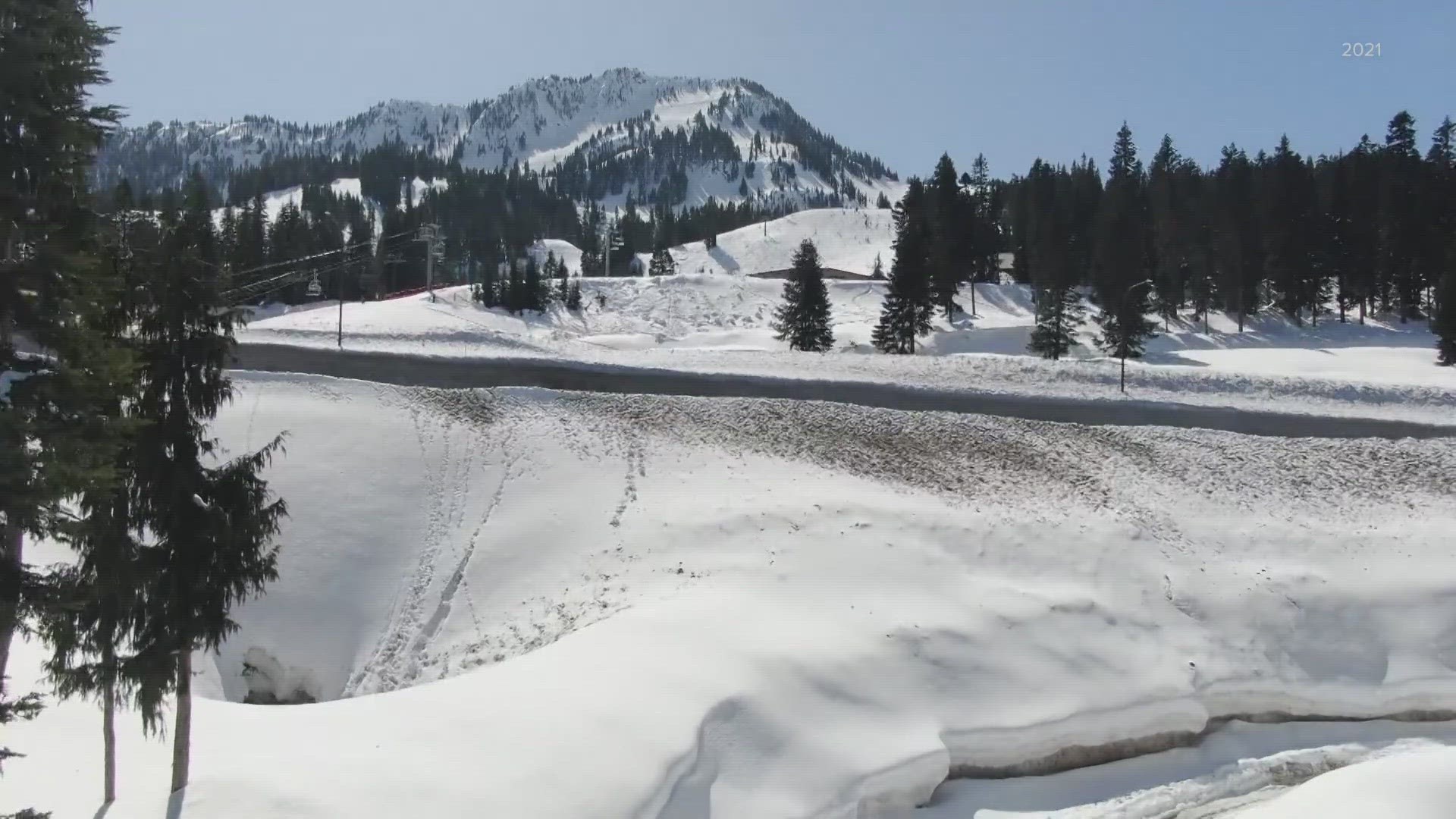SNOQUALMIE PASS, Wash. —
Jim Smith owns and operates Snow Sports Northwest, a ski school based at Snoqualmie Pass in Washington that teaches hundreds of students every year. His father founded the company in the late 60s.
Scott Goddard was hired by Smith’s father in 1983 and has an equally long history skiing this area. Goddard now runs the Saturday school.
The school’s instructors have the task of navigating the terrain with hundreds of kids, something made harder in season’s like this year. The season’s El Niño forecast has delivered. Snow totals are a fraction of normal, creating a domino effect on many industries.
“Remember we’re trying to put 150 kids onto a much smaller area right now,” said Goddard. “Yup, it’s condensing the area right now because of a lack of available runs,” Smith added.
As of mid-February, Washington’s Cascade mountains sit between about 50-75% of normal snow water equivalent. The Olympic Mountains are not even a third of normal.


This is a trend expected of an El Niño year, but data shows that looking big picture, the snow season is on a steady decline since the 20th century.
Smith remembers his own childhood on the mountain. He turned 16 in November and his first solo adventure was driving to the mountain to ski. Now, that’s rarely possible.
“I used to come up the weekend before Thanksgiving for our first run of the year and we would finally put our skis away at the end of April," Smith said. "Today, I get excited if we get to ski in early December. It's already almost a month later."
Historically, peak snowpack hits April 1. The USDA reports that for most places in Oregon, Washington and Idaho, peak snowpack is happening one to three weeks earlier in the year.
A map from the EPA shows the trends in April snowpack in the western U.S. from 1955 to 2022. In Washington, most areas’ snowpack is down between 20 to 30%, with some areas decreasing as much as 50 to 60%.
Looking forward, those trends continue. A University of Washington report projects that in the 4,000 to 5,000 foot range of the Cascades, the length of the snow season could decrease by nearly half by the end of the 21st century. This means that the historical 142 days of snow on the ground in the second half of the 20th century will drop to 87 days on average in the 2080s.
Washington State University PhD candidate Luke Reyes is based in Vancouver, Washington, and is devoting his studies to snowpack vulnerability in the western United States.
Reyes and his research team recently published this study, which analyzed the snowpack during the Pacific Northwest heat dome of 2021, when temperatures skyrocketed into the triple digits for days straight and killed hundreds of people in the region.
“People would post all these before and after pictures and they’d be hiking on Mount St. Helens or Mount Rainier and there’d be snow one day and there’s nothing a week later,” said Reyes.
But when Reyes and his team looked at the numbers, they realized something huge. The heat dome is not the only reason the snow melted.
"[The snow was] mostly gone by the time the heat dome arrived, which suggests something else might have been happening, which come to find was these other earlier heat waves earlier in the year,” said Reyes.
The team realized that weaker, less headline-worthy periods of warm temperatures slowly chipped away at the snowpack before the heat dome arrived. These small scale, but still impactful events, have doubled in frequency since the 1990s.
“It was very consistent and surprisingly consistent how much these heat waves that are very short term still had measurable impacts on snowmelt. And sometimes these short-term acute events can be overlooked,” said Reyes.
Goddard and Smith have witnessed this decline with their own eyes and have mastered the ability to navigate both good and bad snow years. They say that when it comes to skiing, the professionals notice a difference, but kids love the experience no matter how good the snowpack might be.
“I haven’t worked a day since I started in the ski business,” said Smith. “Who else could talk about, this is my office right here right?” echoed Goddard.
They say their focus is teaching people to love the snow.
“We’ll just keep plugging along, waking up every day and looking for that next dump,” said Smith.

